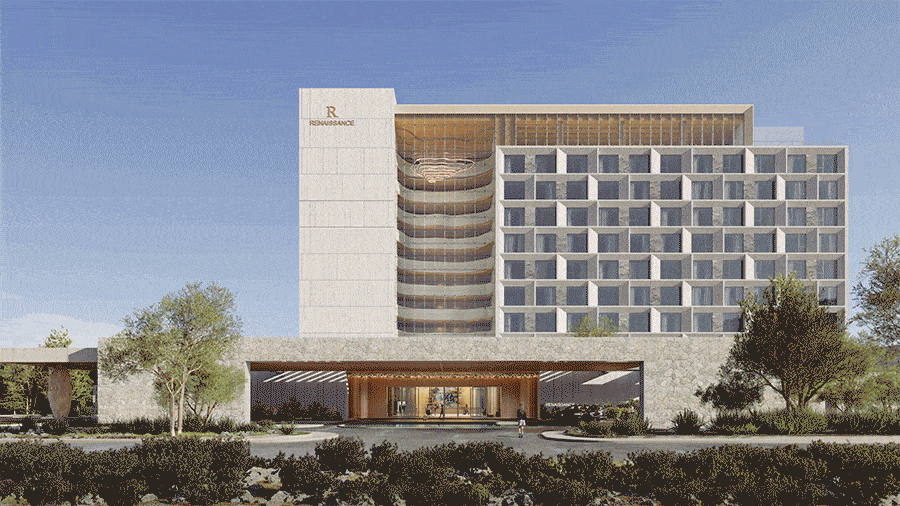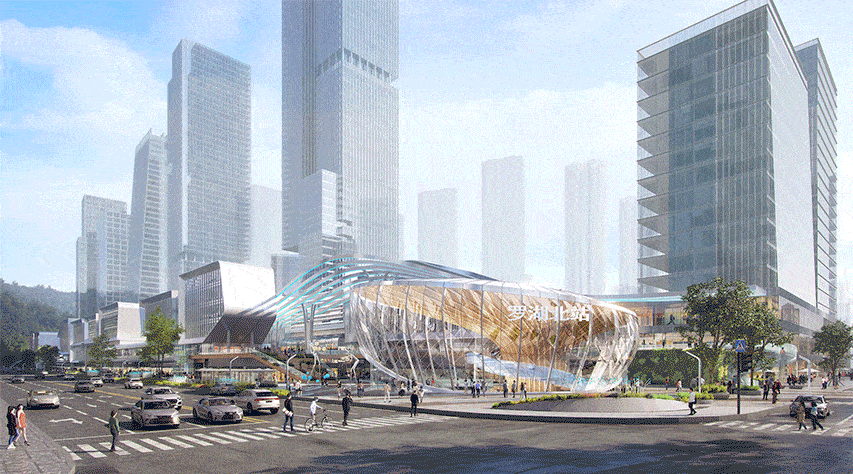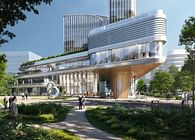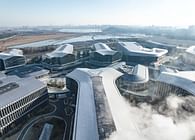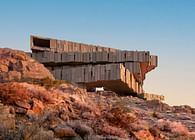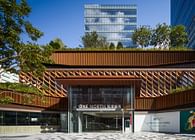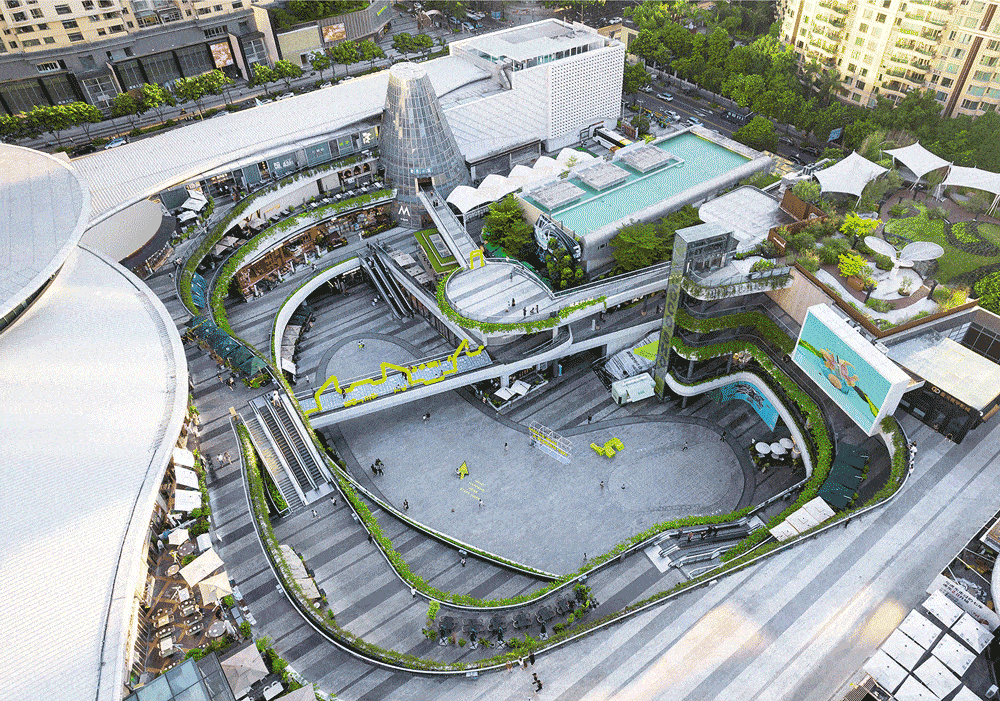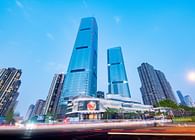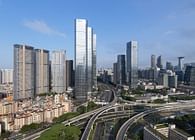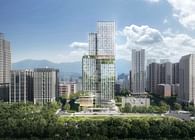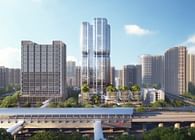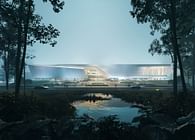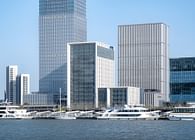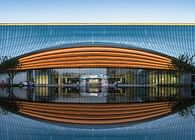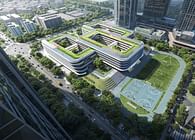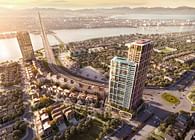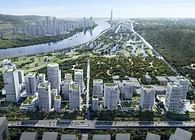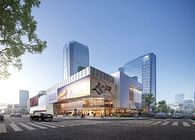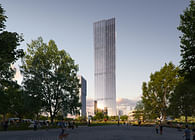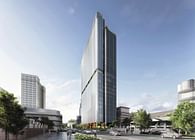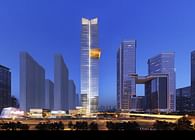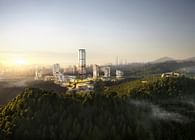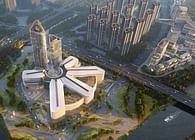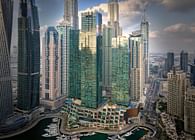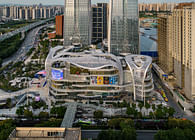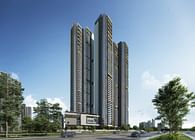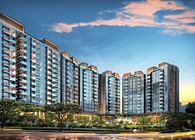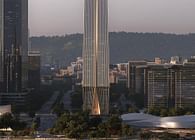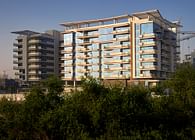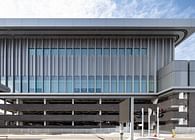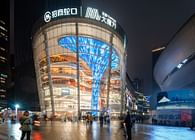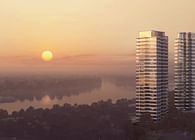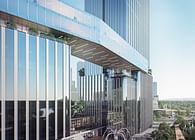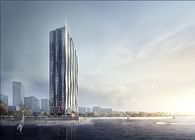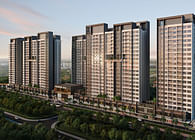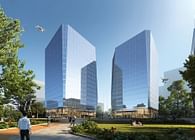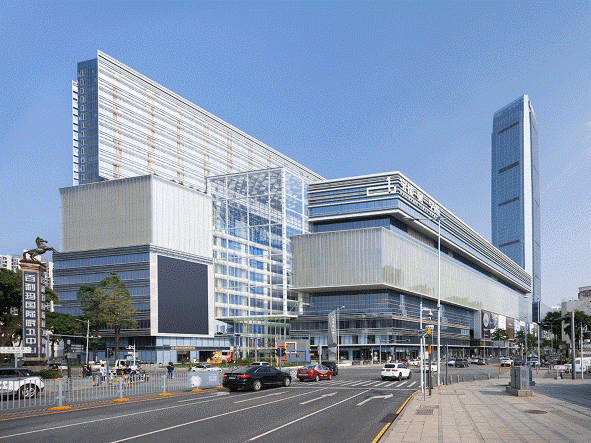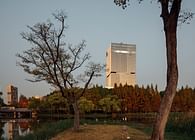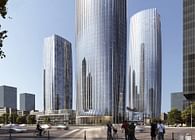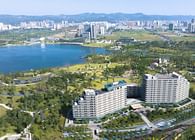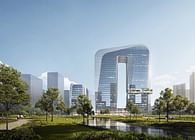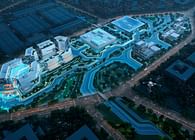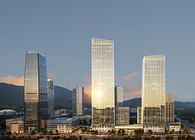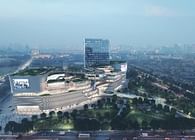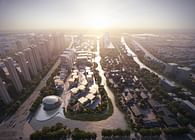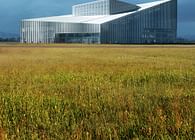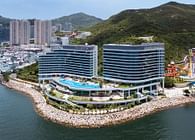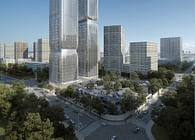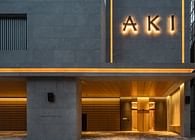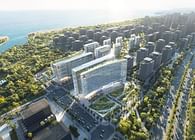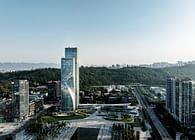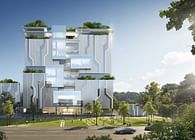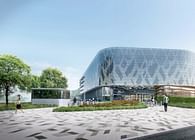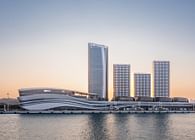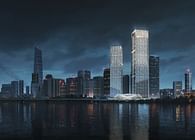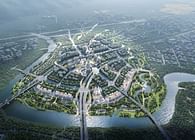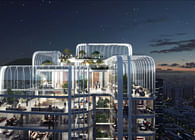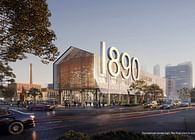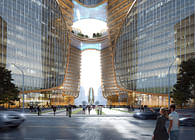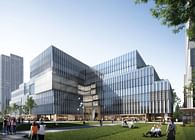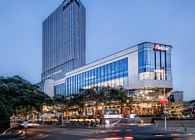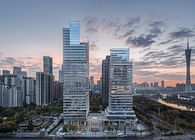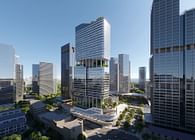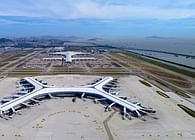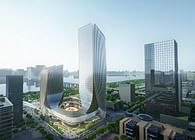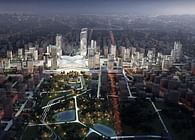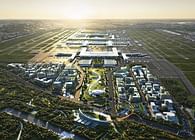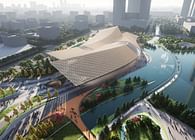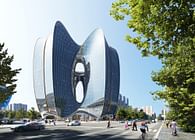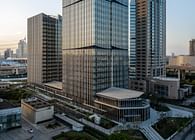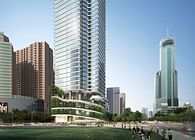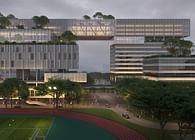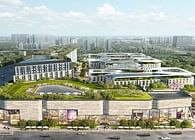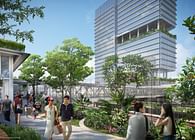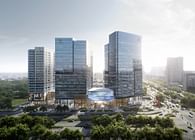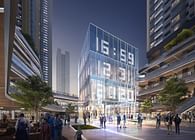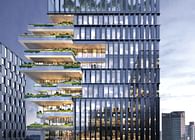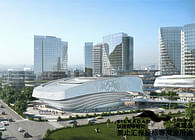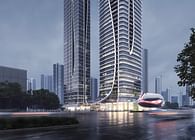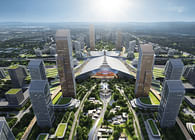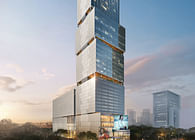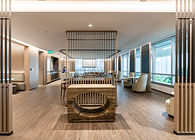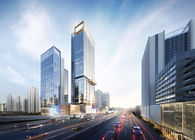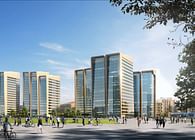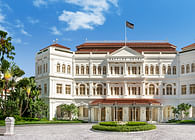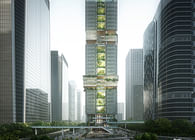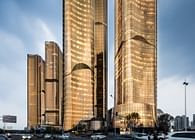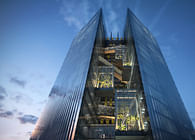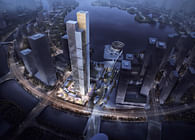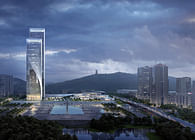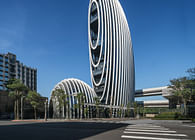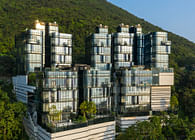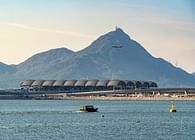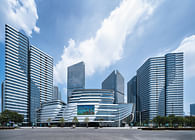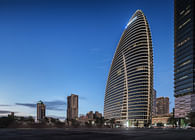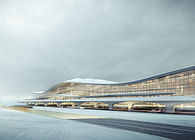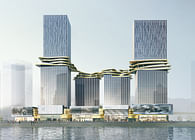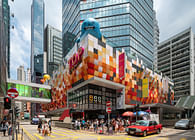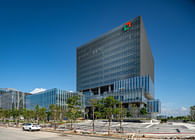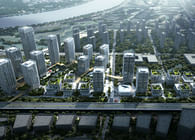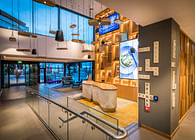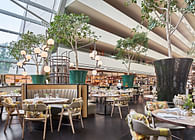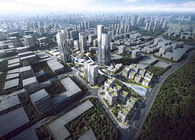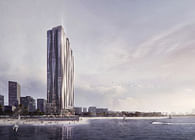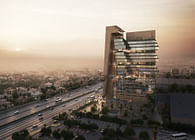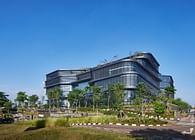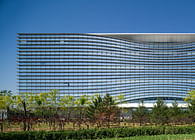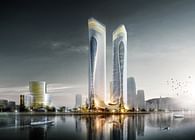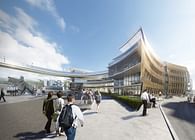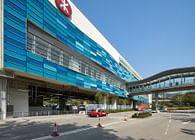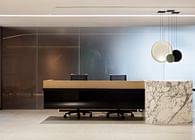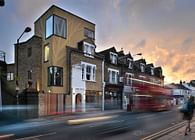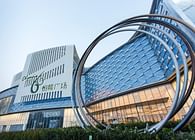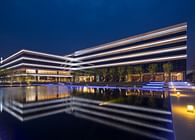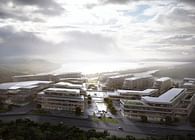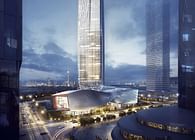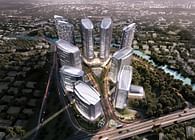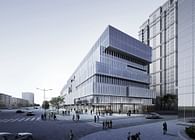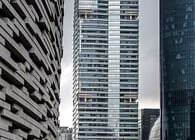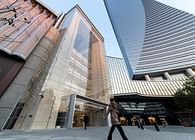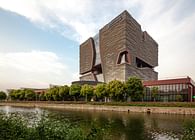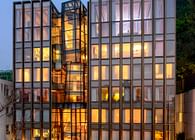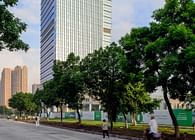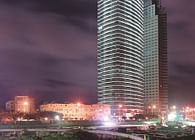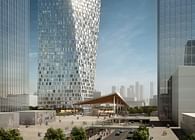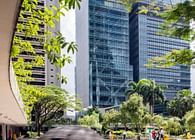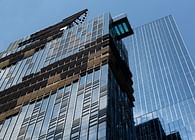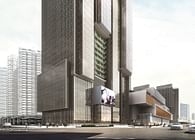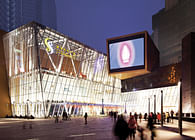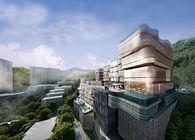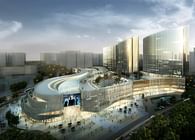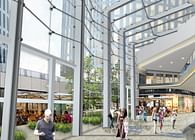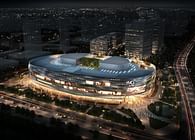
Hong Kong, HK | Singapore, SG | Beijing, CN | Shanghai, CN | Chengdu, CN | Shenzhen, CN | Macau, MO | London, GB | Dubai, AE | Abu Dhabi, AE | Seattle, WA | New Delhi, IN
Designed by Aedas, China Railway Siyuan Survey and Design Group and Shenzhen Urban Transport Consortium, the winning scheme of Qingshuihe Comprehensive Transportation Hub in Luohu, Shenzhen is an impressive Transit-Oriented Development with high degree of station-city integration. It will become a major transportation hub in Shenzhen with 4 urban rails, 1 intercity line, 1 high-speed rail line and various ground transportation.
As the last developable land in Luohu, one of the earliest urban area in Shenzehn, Qingshuihe was once the border of the Special Economic Zone, and has subsequently lagged in growth in terms of the city’s innovative and technology industries. Located at the nexus of multiple strategic links of the region and surrounded by mature supporting facilities, the area possesses favorable conditions for development. Seizing on these potentials, it is designed to transform Luohu’s modern industries.
The design draws inspiration from the natural environment of the area, integrating nature and water elements into the high-density city, to build a unique emblem for Qingshuihe. Executive Director of Aedas Leon Liang said, “to avoid divorcing the hub from the city, we have created a unique urban display surface." The meandering architectural outline, extracted from the elements of the Qingshuihe river nearby, runs through the urban hub like ripples in the wake of a cruise ship passing. The public nodes distributed outwards from the core are conveyed with duckweed floating around the ripples, intimating the close relationship between the Qingshuihe hub station and city.
The station is equipped with daylighting atriums, which directly guide passengers to the exit hall or waiting hall through natural light. The opened sunken plaza and outdoor public platform not only allow passengers to relax in the public space while waiting for bus transfer, they also blur the physical boundary between architecture and nature.
The design merges station-city road, rail traffic, and compound space to render seamless connection between urban and traffic functions. "This is not just the construction of a high-speed rail station, but an urban district renewal. We hope to build Qingshuihe into a super hub city with a high degree of integration. The core areas are integrated into the slow traffic network of the Qingshuihe Hub to realize the coordination of the urban and the hub functions," Liang expounded.
To liberate an area once isolated by mountains, roads, and railways, the design restructures the traffic network through promoting high-speed intercity functions, convenient connection with urban rail and expressway.
The main challenge in the design process hinges on balancing the dynamic between developments and the crisscrossing traffic network, to the effect of providing a nuanced and efficient travel experience. The design uses the atrium as index structure, setting the high-speed rail and intercity platforms below, connecting the automobile traffic on its West, and concentrating the subway arrangement on the east. It integrates the transportation hub and the urban green axis to form an H-shaped moving line.
The design adopts inbound and outbound stratification, in which the first underground floor is the exit floor, and the second underground floor is the distribution layer. The inbound and outbound pedestrian flow is separated to avoid the crossing of moving lines. Via ground and B1 level, urban vehicle traffic and subways converge on B2 level, where it is possible to freely transfer to subways, and national railways. This synchronicity of station entry foreclose the intersection of passenger flow at multiple floors.
The circulation between the high-speed rail and the subway is a pivotal consideration. Other than the installment of soft partitions and escalators, the design reasonably allocate the subway with the largest transfer scale near the hub on B3 to maximise transfer efficiency.
By redirecting the passenger flow through the layered underground segmenting, the compact layout minimises transfer time and improves efficiency. With efficient underground organization, space is reserved for urban space and above-ground development.
Through the three-dimensional slow-moving system that ties the underground station buildings, B1, urban public space on ground level to corridors and commercial development above-ground, the Qingshuihe Hub elevates the idea of integrated, coordinated design.
"In the future, the Qingshuihe Hub will not only be an urban transportation node, but a salient super hub city that buttresses science and technology platforms." said Chris Chen, Aedas Executive Director.
The underground compact hub releases large acre of above-ground space on which a highly integrated station-city space can be cultivated. Urban terraces, together with grade-A offices, five-star hotels, first-rate apartments, science and technology exhibition halls, and other functions, form the core area of the hub.
*Please note that the design is currently being refined and we looking forward to sharing its final realised form in the near future.
Status: Unbuilt
Location: Shenzhen, CN







